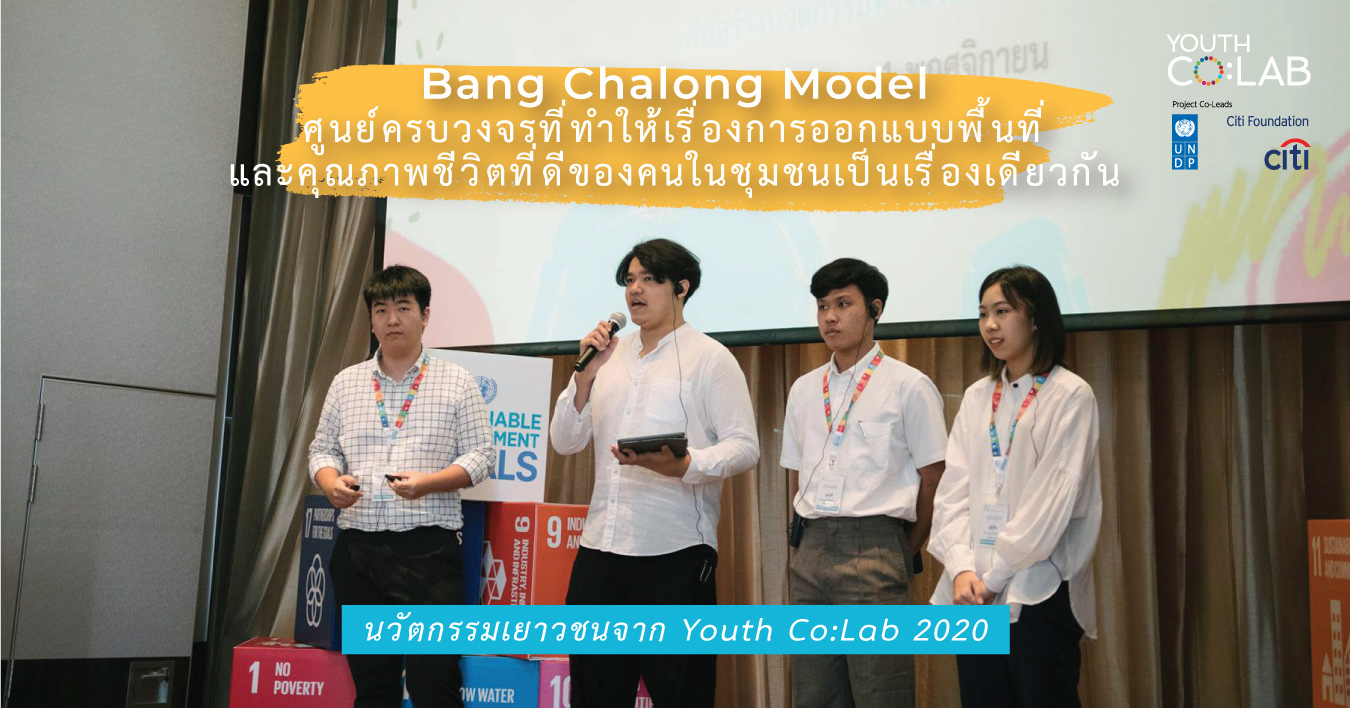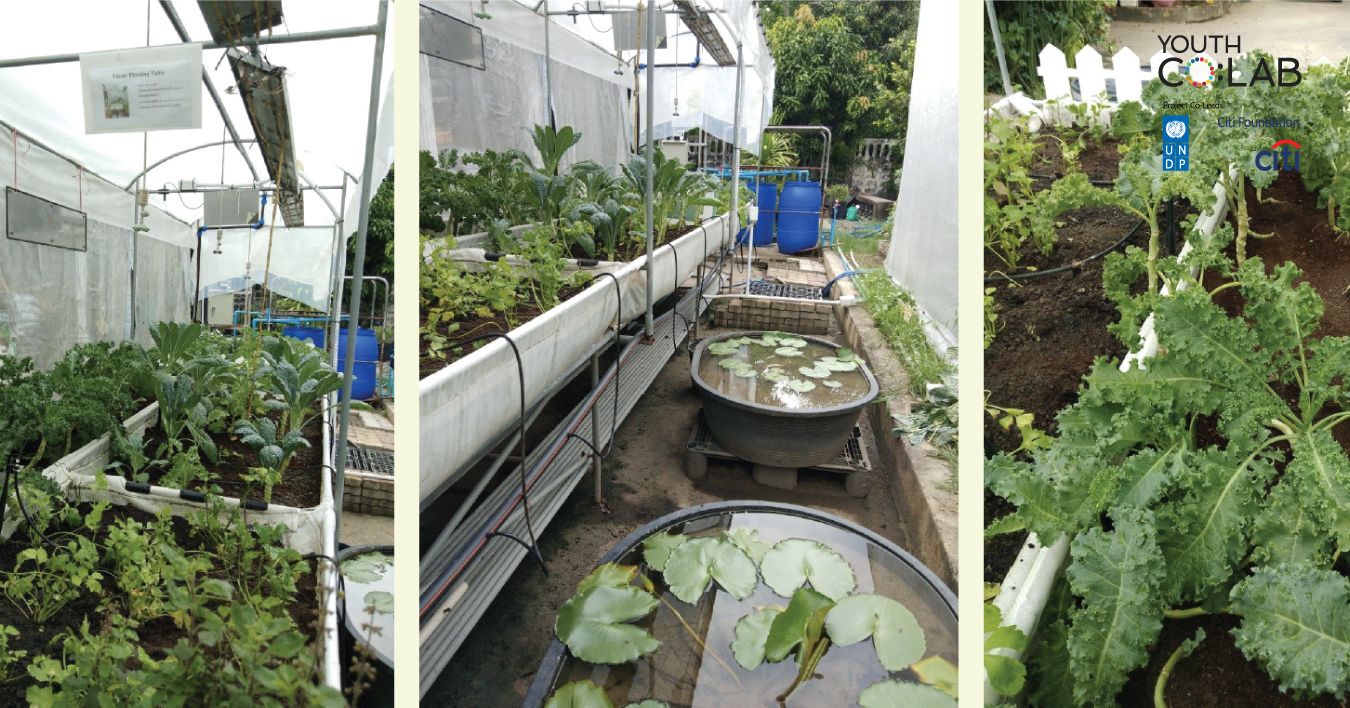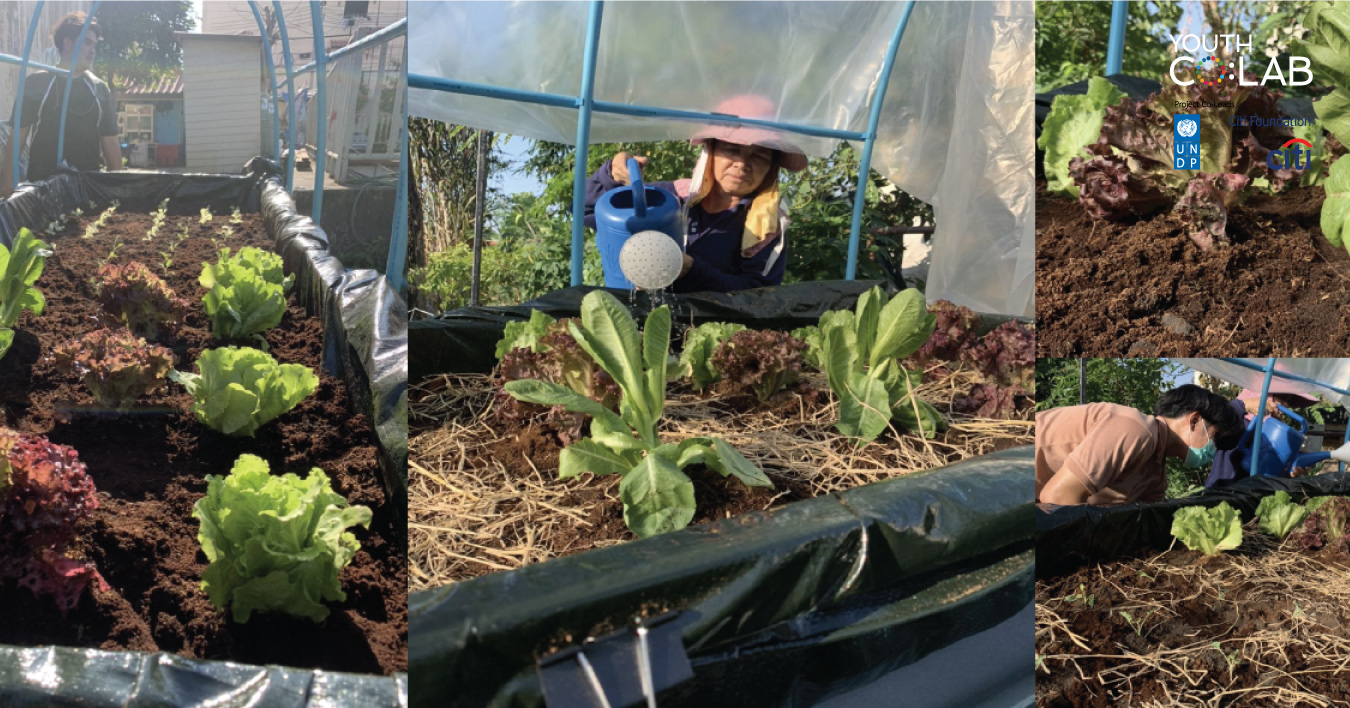- Published Date: 10/05/2021
- by: UNDP
Bang Chalong Model: One stop service that believes design can improve community’s quality of life

Efficient space design contributes to a better quality of life, this is the key concept of Bang Chalong Farming Team members’ adherence.
The better quality of life in their perspective covers various dimensions such as economic, health, and society.
Bang Chalong Model is a gathering of three landscape architect students includings Patawee “Non” Luphonthae, Kotchawan “Fern” Lawochai and Plutthapong “James” Petchsrisom also an architecture student Weth “Doe”Manojureehakul. With these educational backgrounds, they have a particular interest and expertise in public space design and development.
Bang Chalong Farming aims to be a one stop service that helps to further develop the community’s activities to generate income right from planning the production stage to finding the appropriate markets. At the same time, another mission is to develop and restore public space in that community so all residents can have a better quality of life in their community.
Bang Chalong was the first community that inspired the team to gather. Therefore, the team is named after it. Previously, this community used the leftover space to grow vegetables as their hobby. The Bang Chalong Farming Team saw an opportunity to build upon a vegetable growing – develop the space along with promoting the quality of life all at once.

Make Fruitful Veggies
Bang Chalong Housing, Samut Prakan Province is a community with 96 buildings densely packed in a limited area. The building gaps and common spaces are mostly used as a parking lot.
“We noticed that people have no space to do other activities. So we made a deal with the residential juristic person that if we developed an area to grow vegetables and make money from selling them, we would use some of the money to develop the area to meet the needs of the people there,” Non briefly told their work process. There are two areas that the Bang Chalong Team intends to develop. First is about to improve the plantation to generate income and second is to develop public spaces for the residents to use.
Previously, a small group of residents have already grown vegetables in the leftover space by a small group of residents which is supported by 1 out of the 5 residential juristic persons. However, most of the vegetables are grown for consumption, it is not enough for sale due to the limited cultivation space.
“We think that we can help to choose more suitable areas for cultivating because in the past they put an effort to plant in every possible area but it does mean all areas are suitable. Additionally, we provide cultivation knowledgeห such as which vegetables will suit well with the markets both inside and outside the community and which cultivation methods could mitigate pest risk that should be helpful, “said Non.
Doe explained the work process from the beginning that the team talked to the residents and juridical person about what the spaces they need. Then, co-plan about what the community will get and what will the team provide to the community once each step goes as planned.
“Having a consultation before implementing is like a validation process in which we leverage one another. It makes both the community and the team follow the plan better and clearly see what each partner does in each step.”
When the Bang Chalong Farming team qualified to the final 5 teams of the Youth Co: Lab 2020 and received a fund to prototype the project. From the final goal that the team wanted to turn the roof structure into a rooftop vegetable gardening, the team opted to do a simpler structure with the stand instead due to limited time and budget.
“As the structure is lifted from the ground, the primary feedback is that the community members do not have a backache. The maintenance cost of the vegetable plot is also less because the risk of insect diseases is decreased and other factors can be better controlled.” Non said that people who grow vegetables in communities are around 50-60 years old, when they do not have to harvest at the ground level, it is clearly beneficial to their physical health.
Fern added that planting on the structure can mitigate another problem as previously they cannot grow veggies all year round due to the waterlogged.
Additionally, changing the nature of the cultivated area, Bang Chalong Model also gives importance to the vegetable selection.
“We recommend growing green oak and red oak lettuce because these vegetables are a high value market and less competitive. They can also be sold in the community and other markets in the future.” Fern explains that the team members have expertise in selecting species and knowledge on cultivation. In addition, vegetables that are grown using an organic growing process or use the least non-natural chemicals as well.
“When a community grows vegetables like this, they don’t have to rely on chemicals. They don’t have to be indirect slaves of capitalists. They also made fertilizer by themself. These also make good community stories that are valuable for marketing,” Non added

From Veggies to Better Community
Bang Chalong Farming Team believes that vegetables can help the locals to gather more easily.
“They don’t have much interaction before but when growing vegetables becomes the community’s activity, they water the veggies together and take turns to take care of them.”James shared the tangible results that the team started to see.
Though at this stage the amount of vegetables is currently not enough for distribution, the outcome has been good. The vegetables were fruitful. Additionally, the members who take part in this project manage well to take care of the plants. The Bang Chalong Farming Team thinks once they can provide 20 structures for plantation, the community can start to sell the vegetable. However, the team is still in need of budget and time.
“If we can continue running this, one day we will earn enough to improve public spaces for all community members and that will be very impactful. Children will have a playground. Adults will have spaces to sit. There will not be just parking lots anywhere. With more green space, it would be awesome,”James talked about the public space development plan which is the team’s another objective that they would like to provide to the community.
James said nowadays it is common for children in the community to play badminton in the parking lots where they have to watch out for cars. Some children climb on the sewer while some run up and down the stairs or play between the building gaps where large bins are placed. These are considered not safe for children.
“Unfriendly public spaces are the result of vision and policy that the policy makers don’t really give an importance to, though it can create many activities for people.” Non explained, adding that public spaces should be accessible for everyone.
In terms of space development, teams are aware of future challenges that could happen. For example, the local may question and raised concerned about their parking lots get replaced, but with the working process that involves community and the residential juristic person, along with the professional aptitude, the team believes that they can allocate the space to maximize the benefits of public spaces while maintaining the existed function at its best.



